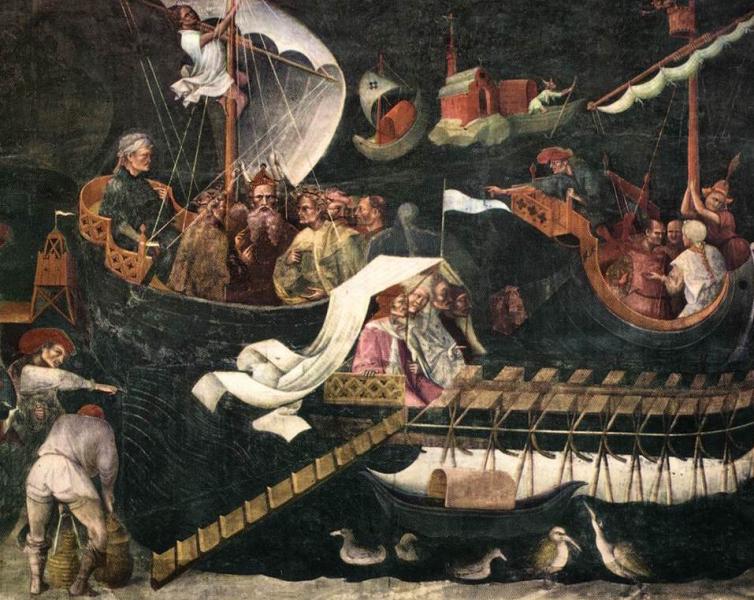- Read offline
- Access all content
- Use the in-app Map to find sites, and add custom locations (your hotel...)
- Build a list of your own favourites
- Search the contents with full-text search functionality
- ... and more!
Medieval Art and Architecture

In the so-called Dark Ages, great art in the Po valley survived only at Ravenna, where the Gothic Kingdom and after them the Byzantines continued the evolution of Roman art with impressive basilicas and glittering mosaics. While the pull of Ravenna in Emilia was not nearly as strong as it was in Venice, you’ll find echoes of Ravenna throughout this region, in Byzantine miniatures, and in the bell towers and pavements of its churches, notably in Bologna’s Santo Stefano complex and the Abbey of Nonantola near Modena.
As medieval civilization developed, influences came from the opposite direction, from Lombardy. Among the Romanesque churches, Modena Cathedral is the brightest jewel, decorated by the sculptor Wiligelmo, his followers and the Campionese Masters.
The Bolognese school of painting grew up alongside the university. The city’s artists excelled in miniatures, in illuminated manuscripts, Bibles and religious texts, but also legal codices and books of guild statutes or poetry (Biblioteca Estense in Modena, Biblioteca Comunale in Bologna). Although Byzantine influences were initially strong, by the late 13th century Giotto’s more naturalistic, volumetric style led to a wealth of invention, foreshortening, movement and the individualization of characters. Some of the important artists to work in Bologna and Modena are Vitale da Bologna, Simone de' Crocefissi and Giovanni da Modena, painter of the celebrated frescoes in San Petronio.
Image by Comune di Bologna

